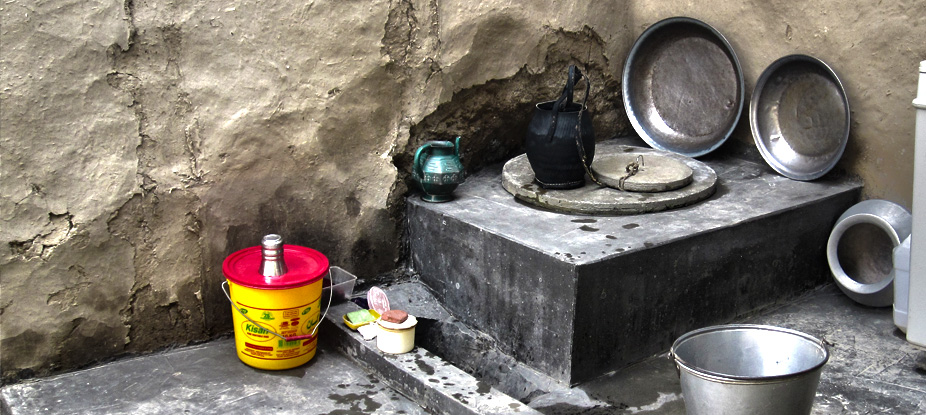![clip_image002[4] clip_image002[4]](https://irsp.org.pk/wp-content/uploads/2012/01/clip_image0024_thumb.jpg) Flood 2010 was one of the most terrible disasters in the history of Pakistan. It all began in July 2010 following heavy monsoon rains in the Khyber Pakhtunkhwa, Sindh, Punjab and Baluchistan regions of Pakistan. The estimations indicated that over two thousand people have died and over a million homes have been destroyed. The United Nations estimates that more than twenty million people are injured or homeless as a result of the flooding exceeding the combined total of individuals affected by the 2004 Indian Ocean tsunami, the 2005 Kashmir earthquake and the 2010 Haiti earthquake. However, the death count in each of those 3 disasters was significantly higher than the number of people killed in this flood. At one point, approximately one-fifth of Pakistan’s total land area was underwater due to the flooding.
Flood 2010 was one of the most terrible disasters in the history of Pakistan. It all began in July 2010 following heavy monsoon rains in the Khyber Pakhtunkhwa, Sindh, Punjab and Baluchistan regions of Pakistan. The estimations indicated that over two thousand people have died and over a million homes have been destroyed. The United Nations estimates that more than twenty million people are injured or homeless as a result of the flooding exceeding the combined total of individuals affected by the 2004 Indian Ocean tsunami, the 2005 Kashmir earthquake and the 2010 Haiti earthquake. However, the death count in each of those 3 disasters was significantly higher than the number of people killed in this flood. At one point, approximately one-fifth of Pakistan’s total land area was underwater due to the flooding.
17 million acres of farm land have been inundated. Some 100,000 cattle and more than one million tons of privately stored wheat have been lost, while 3,000 fish farms, 2,000 poultry farms and 1,000 tractors had been destroyed. Losses have amounted to three per cent of GDP, according a report in the daily Telegraph.![clip_image004[4] clip_image004[4]](https://irsp.org.pk/wp-content/uploads/2012/01/clip_image0044_thumb.jpg)
According to estimates of the Relief International, an international agency, 98% of water and sanitation facilities in the affected areas of Peshawar, Charsadda, Nowshehra, and Swat districts were severely damaged or have been rendered unusable due to heavy silting and heavy water flow. Throughout the province fields are flooded with expected production damage to rice, sugarcane and corn by an estimated 10 to 15 percent.
![clip_image006[4] clip_image006[4]](https://irsp.org.pk/wp-content/uploads/2012/01/clip_image0064_thumb.jpg) The United Nations warned on August 17, 2010 that 3.5m Pakistani children were at risk from cholera and other diseases because of the slow and inadequate delivery of flood relief, as raging waters from the bloated Indus River marooned dozens more villages. Hundreds of thousands of survivors are still cut off from rescue more than two weeks after Pakistan’s worst-ever flooding hit the country, killing at least 1,600 people. Many survivors are forced to drink contaminated drinking water. The death toll could rise from disease and hunger if the aid effort is not stepped up.
The United Nations warned on August 17, 2010 that 3.5m Pakistani children were at risk from cholera and other diseases because of the slow and inadequate delivery of flood relief, as raging waters from the bloated Indus River marooned dozens more villages. Hundreds of thousands of survivors are still cut off from rescue more than two weeks after Pakistan’s worst-ever flooding hit the country, killing at least 1,600 people. Many survivors are forced to drink contaminated drinking water. The death toll could rise from disease and hunger if the aid effort is not stepped up.
![clip_image008[4] clip_image008[4]](https://irsp.org.pk/wp-content/uploads/2012/01/clip_image0084_thumb.jpg) In the affected areas availability of drinking water was one of the biggest concerns as all the water sources were severely contaminated due to flood. In the post flood scenario the diseases epidemics started due to inadequate sanitation, poor hygiene and contaminated water initiated by the flood.The disease outbreaks pose grave risks to victims of Pakistan’s worst floods in decades causing fresh concern about already complicated relief efforts. An epidemic could create another disaster for Pakistan. Cases have cholera have been reported. A health crisis would tax aid agencies which are facing vast logistical challenges because of the damage and illness caused by the widespread flooding. The United Nations is worried about water-borne diseases. There have been 36,000 suspected cases of potentially fatal acute watery diarrhea reported after flood. The government and aid agencies said they are unable to reach or help many of the millions uprooted so far.
In the affected areas availability of drinking water was one of the biggest concerns as all the water sources were severely contaminated due to flood. In the post flood scenario the diseases epidemics started due to inadequate sanitation, poor hygiene and contaminated water initiated by the flood.The disease outbreaks pose grave risks to victims of Pakistan’s worst floods in decades causing fresh concern about already complicated relief efforts. An epidemic could create another disaster for Pakistan. Cases have cholera have been reported. A health crisis would tax aid agencies which are facing vast logistical challenges because of the damage and illness caused by the widespread flooding. The United Nations is worried about water-borne diseases. There have been 36,000 suspected cases of potentially fatal acute watery diarrhea reported after flood. The government and aid agencies said they are unable to reach or help many of the millions uprooted so far.
The Wells Cleaning and Disinfection by IRSP
![clip_image010[4] clip_image010[4]](https://irsp.org.pk/wp-content/uploads/2012/01/clip_image0104_thumb.jpg) Integrated Regional Support Program is a multi-sector development organization working on integrated development approach to bring a sustainable development in the region. IRSP was evolved from Pak-German IRDP and went through many phases of its development.
Integrated Regional Support Program is a multi-sector development organization working on integrated development approach to bring a sustainable development in the region. IRSP was evolved from Pak-German IRDP and went through many phases of its development.
During the mid of August 2010; the SDC official visited IRSP who was briefed about the overall situation of floods affected districts of Nowshehra and Charsadda. Then the visits were made to the district authorities dealing in water, sanitation and public health.
![clip_image012[4] clip_image012[4]](https://irsp.org.pk/wp-content/uploads/2012/01/clip_image0124_thumb.jpg) The assessment found that all water sources are contaminated by flood and the ground water is not safe for drinking as tested by IRSP in its laboratory. The flood water contaminated the entire drinking water sources in the affected areas and the population is totally become dependent on alternate source of drinking water. It was recommended during the assessment that all shallow wells to be cleaned and disinfected in order to provide clean drinking water to the flood affected population and to minimize the threats of water borne diseases.
The assessment found that all water sources are contaminated by flood and the ground water is not safe for drinking as tested by IRSP in its laboratory. The flood water contaminated the entire drinking water sources in the affected areas and the population is totally become dependent on alternate source of drinking water. It was recommended during the assessment that all shallow wells to be cleaned and disinfected in order to provide clean drinking water to the flood affected population and to minimize the threats of water borne diseases.
![clip_image014[4] clip_image014[4]](https://irsp.org.pk/wp-content/uploads/2012/01/clip_image0144_thumb.jpg) To provide clean drinking water to the affected population on their door step, IRSP and SDC started the project of “Well Cleaning and Disinfection in the Flood Affected 2 districts of Pakistanâ€
To provide clean drinking water to the affected population on their door step, IRSP and SDC started the project of “Well Cleaning and Disinfection in the Flood Affected 2 districts of Pakistanâ€
Following are the figures of well cleaning in different villages of the above districts;
|
S# |
District |
Union Council |
No. Of Villages |
No. Of Assessed Wells |
No. Of Cleaned Wells |
Beneficiaries |
|
1 |
Charsadda |
Utmanzai |
13 |
458 |
426 |
7,134 |
|
2 |
Mirzadher |
13 |
1,171 |
886 |
12,055 |
|
|
3 |
Tangi |
1 |
41 |
39 |
430 |
|
|
4 |
Nowshera |
PirSabaq |
10 |
520 |
214 |
2,761 |
|
5 |
Zara Maina |
11 |
269 |
232 |
4,225 |
|
|
6 |
Misri Banda |
7 |
125 |
91 |
1,258 |
|
|
7 |
Mughulki |
1 |
149 |
149 |
2,248 |
|
|
Grand Total |
7 |
56 |
2,733 |
2,037 |
30,111 |
|
Source: IRSP baseline Survey
Water Quality Analysis of Wells Cleaning Project


![clip_image016[4] clip_image016[4]](https://irsp.org.pk/wp-content/uploads/2012/01/clip_image0164_thumb.jpg)
![clip_image018[4] clip_image018[4]](https://irsp.org.pk/wp-content/uploads/2012/01/clip_image0184_thumb.jpg)

![clip_image020[4] clip_image020[4]](https://irsp.org.pk/wp-content/uploads/2012/01/clip_image0204_thumb.png)